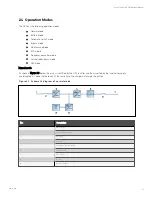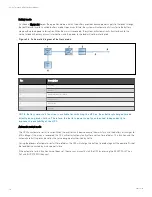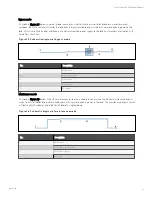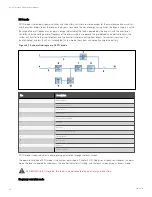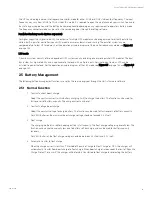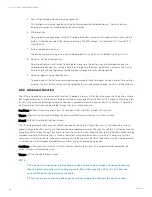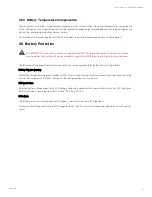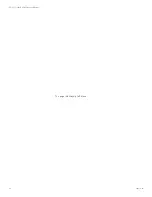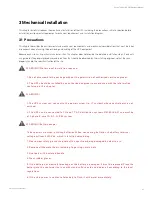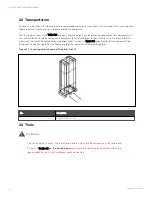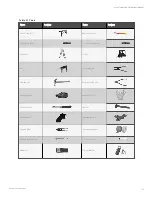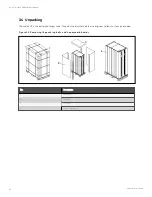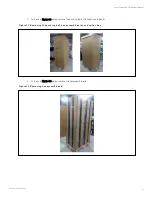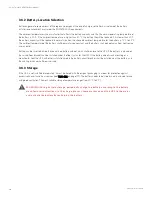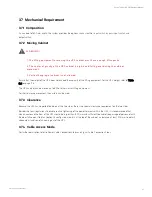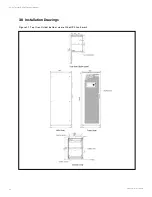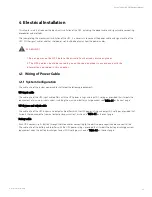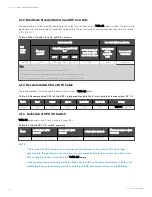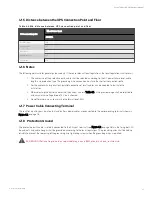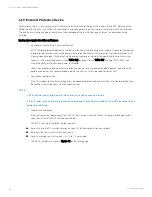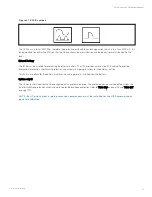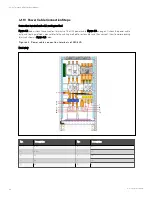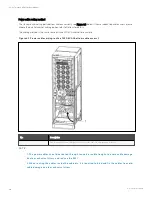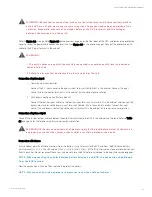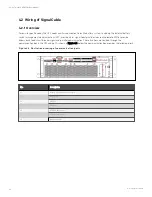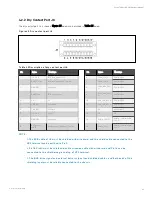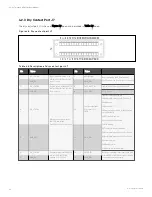
3.5 Initial Inspection
Before installing the UPS, carry out the following inspections:
1.
Ensure that the environment of the UPS equipment room meets the environmental requirement specified in the
product technical specifications, especially the ambient temperature, ventilation conditions, and the dust
situations.
2.
Unpack the UPS and battery under the guidance of authorized service engineer. Visually inspect whether the
UPS and battery have any transportation damage. If there is any damage, report to the carrier immediately.
3.
Verify the UPS label and confirm the correctness of the UPS. The UPS label is attached on the back of the door.
The model, capacity and main parameters of the UPS are marked on the label.
3.6 Environmental Requirement
3.6.1 UPS Location Selection
The UPS should be located in a cool, dry, clean-air indoor environment with adequate ventilation, and should be located on
concrete or other non-flammable and flat surfaces. The ambient environment should be free of conductive powder (such as
metallic powder, sulfide, sulfur dioxide, graphite, carbon fiber, conductive fiber, etc.), acid mist or other conductive media
(strongly ionized substances). The environment specifications should comply with relevant international standard &
specifications and the operating range (see Table 12.2 on page 175) specified in this manual.
The UPS uses forced cooling by internal fans. Cooling air enters the UPS through the ventilation grills at the front of the
cabinet and exhaust through the ventilation grills at the back of the cabinet. Do not obstruct the ventilation holes
(ventilation grills). The rear of the UPS should be kept a distance at least 500 mm from the wall to avoid blocking the UPS
heat dissipation, thus reducing the UPS internal temperature and improving the UPS life.
If necessary, install indoor extractor fans to aid cooling-air flow to avoid room temperature buildup. Air filters (optional)
should be used when the UPS is to operate in a dirty environment.
N O T E: W h en th e battery cabin et is in stalled n ear th e UP S, th e m axim u m allo wable am bien t tem peratu re
is depen den t o n th e battery rath er th an th e UP S.
N O T E: If th e UP S is wo rk in g in ECO m o de, th e po wer co n su m ptio n will be less th an th at in N o rm al
m o de. P ro per air co n ditio n in g system sh all be selected acco rdin g to th e n o rm al o peratin g m o de.
3 Mechanical Installation
29
Vertiv™ Liebert® APM Plus User Manual
Содержание APM 0250kMK16FN02000
Страница 1: ...Vertiv Liebert APM Plus User Manual 50 250 kVA UPS...
Страница 8: ...vi This page intentionally left blank Vertiv Liebert APM Plus User Manual...
Страница 16: ...1 Important Safety Instructions 8 This page intentionally left blank Vertiv Liebert APM Plus User Manual...
Страница 30: ...2 Overview 22 This page intentionally left blank Vertiv Liebert APM Plus User Manual...
Страница 60: ...4 Electrical Installation 52 This page intentionally left blank Vertiv Liebert APM Plus User Manual...
Страница 73: ...Figure 5 11 Customize the display 5 Operator Control and Display Panel 65 Vertiv Liebert APM Plus User Manual...
Страница 97: ...5 Operator Control and Display Panel 89 Vertiv Liebert APM Plus User Manual...
Страница 154: ...Figure 8 8 LBS port J4 on bypass control module 8 Parallel System and LBS System 146 Vertiv Liebert APM Plus User Manual...
Страница 182: ...11 Service and Maintenance 174 This page intentionally left blank Vertiv Liebert APM Plus User Manual...
Страница 188: ...12 Specifications 180 This page intentionally left blank Vertiv Liebert APM Plus User Manual...
Страница 191: ...Vertiv Liebert APM Plus User Manual...

